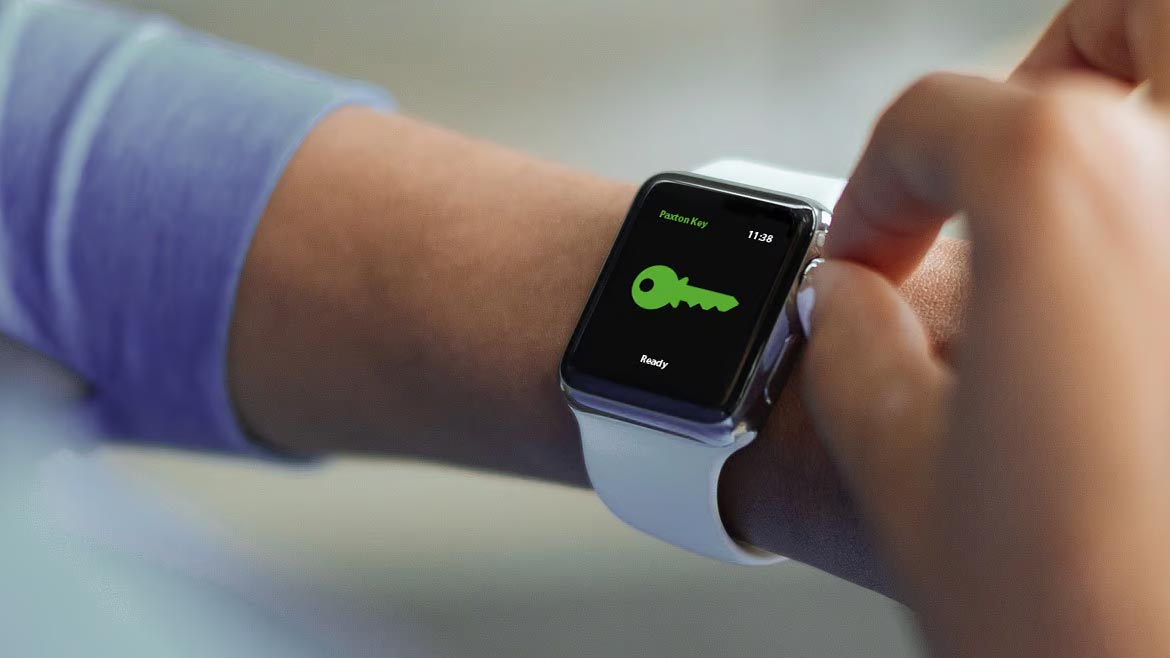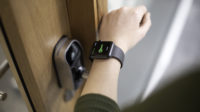Mobile technology is ubiquitous — and the same is becoming true for mobile credentials. According to a report from Omdia, nearly 88.8 million mobile credentials were downloaded globally in 2023, which is almost three times more than the 29.8 million downloaded in 2021.
Industry experts say that it’s an exciting technology that has a surprising amount of mainstream attention. Tech giants — like Apple, Google and Samsung — are at the forefront of mobile credentials, bringing attention to the technology beyond that of the security industry. What’s more, experts say it’s uniquely a technology that organizations claim their employees are requesting — a fact that makes mobile credentials especially thrilling.
According to Jason Schimpf, strategic account director, mobile, HID, Austin, Texas, the excitement presents a capitalization opportunity for the security dealer/integrator. “When you’re going to your own customers and presenting the latest technology to them, it continues to show that you’re on the edge of innovation and technology," he says. “You become their trusted advisor. Investing into the technology and understanding it is going to differentiate you from everybody else on the market. It gives your team something to talk about to try to get new end user acquisition.”
Taking the Wallet Beyond Campus
Mobile credentialing is not quite the industry standard, but it is experiencing substantial growth. Rob Druktenis, program manager, access control, Axis Communications, Chelmsford, Mass., says, “While physical credentials are still prevalent, we’ve seen a steady shift toward mobile credentials over the last few years. Additionally, more and more manufacturers are adding Bluetooth and near field communication (NFC) technology to support their card readers and meet changing customer needs. Some industry reports suggest that nearly 40 percent of companies are using some form of mobile credentials.”
According to the experts, adoption rates on college campuses have been steadiest. The reasons are twofold. College-age young adults have all grown up with a smartphone in their hand. The other reason is the undeniable benefits to the mobile — and especially the wallet-based — credential. “Upgrades to campus security infrastructure are often driven by a desire for a more streamlined, all-in-one solution, enabling students, faculty and staff to access buildings, dining facilities and even make payments using a single device — their smartphone,” says Neerja Bajaj, vice president of product and innovation, Brivo, Bethesda, Md.
A major trend driving growth in mobile credentials has been the digital wallet. Apple, Google and Samsung have historically used this tech to securely store financial information, but the tech was eventually opened to identification on college campuses. “Adoption rates in education are taking off because that’s really where the wallet experience started,” Schimpf says.
But those tech giants have been expanding wallet credentials beyond the campus. “Until more recently, higher education is where mobile credentials have been in highest demand,” says Lester LaPierre, director of business development, electronic access control, ASSA ABLOY, New Haven, Conn. “As Apple and Google have become increasingly willing to open their wallet technology for more NFC apps, mobile credentials are now gaining traction beyond the campus and emerging in commercial segments — such as office buildings and healthcare settings. Some churches, retail outlets and other venues also see its security and convenience benefits.”

Uses & Benefits Beyond ‘Always-With-You’
The key benefit to mobile credentials is the fact that for most people, their smartphone is always with them. “User experience is a major benefit of mobile credentials,” says Olivia Renaud, group product manager for credentials, Allegion, Carmel, Ind. End users no longer need to carry fobs or plastic cards — or worry about losing and replacing them — which is the biggest advantage at the surface level.”
Renaud continues, “If you dig a bit deeper, allowing users to have more control over their credentials is a huge benefit. If they get a new phone, they don’t have to tell the card office, they can simply add their credentials to their new phone. If they lose their device, they have the power to manage their credentials without additional aid, allowing for increased efficiency and convenience.”
But benefits to the technology are continuing to evolve past the convenience of being ‘always-with-you.’ LaPierre offers the following example from the education sector, “K-12 districts are starting to see more of an upward tick in mobile access adoption as well, primarily for faculty, administrative staff and security personnel,” he says. “A new Tier 3-4 component in the current Partner Alliance for Safer Schools (PASS) guidelines for building perimeter electronic access control (EAC) calls for issuing mobile credentials to emergency responders.”
LaPierre continues, “Doing so can save critical minutes by reducing the reliance on locating lock boxes to retrieve entry keys. New York City, for example, has already provided its 60,000+ police officers with mobile credentials to access any one of the city’s 1,300 schools.”
The emergence of smart-buildings is another trend that presents benefits to the end user. Users can be authorized through their credentialing software to have control of smart building functionality. “What’s more, open technology and interoperability allow mobile credentials to be used for more than just access control — in the case of today’s smart buildings, these credentials can provide the ability to control building lighting and HVAC systems, utilize printers, access user workstations, book conference rooms and more,” Druktenis says. “It should also be noted that sustainability continues to influence more business decisions — including eliminating the use of plastic access cards in favor of mobile credentials.”


I can tell you that at this point, the traditional security integrators that adopt this and accept it are going to be the ones in a few years that have established themselves as the experts.
Opportunities for Everyone
Because of the benefits of cloud-based solutions like those presented by the wallet, Apple, Google and Samsung are heavily invested into the future of mobile credentials. Renaud points to the tech giants’ involvement in organizations that focus on the future of these cloud-based solutions and their security. “Interoperability and ease of use are increasingly important for integrators and their customers, all with security in mind. The Cloud Security Alliance (CSA), backed by Apple, Google and Samsung, is one of the organizations spearheading this transformation and setting industry standards.”
Schimpf again emphasizes that it’s these companies coming into the security space that’s driving the future of mobile credentials. “There’s something exciting about the wallet,” he says. “In the security industry, we’ve seen companies try to get into the space and we’ve seen a lot of them fumble because they didn’t understand the industry. The difference with the wallet, is you’ve got Apple, Google and Samsung as the three major drivers of wallet. They’re taking their time and investing in our industry to understand what makes our industry tick.”
Schimpf continues, “They take feedback and they’re innovating and they’re changing the way that they come to the market based on the feedback. I have not personally seen too many or any of the IT space companies that try to get into security really invest in security. These tech giants’ agenda is to make the user experience for security as easy as possible. They want to make it seamless to improve operational efficiency. They’re trying to help drive down costs over time to make security into more of an operational expense.”
Mobile credentials have been around for the last decade, but it is the introduction of the wallet-based credential that industry experts have their eye on in the future. And because of it being in its early stages, the technology’s potential has yet to fully crystallize.
Renaud offers the following example, “As we saw with the Apple App Store, no one knew how it would be used, but it has manifested into an entire industry.”
Closing on Credentials
While the advantages are there, the technology still has not quite become standard; but the experts agree that it’s on its way. “This technology is here to stay, and we will only see its adoption grow until it becomes the norm,” says Matthew Macintosh, product manager, hosted solutions, AMAG Technology, Hawthorne, Calif. “The mobile device is highly adaptable, with limitless possibilities in terms of features and form factor. This, combined with the fact that it offers both security and convenience, makes it an unstoppable force.”
In fact, some could see a future where physical credentials are basically a thing of the past. “I believe that utilizing ubiquitous technology that everyone carries around with them to access doors will become more prevalent in the industry and I wouldn’t be surprised if at some point in the future, physical credentials in their current form no longer exist,” says Steve Rowlands, divisional director of product management, Paxton, Greenville, S.C.
Unanimously, the experts agree that now is the time for security dealers and integrators to position themselves as an expert in mobile credentials. “I can tell you that at this point, the traditional security integrators that adopt this and accept it are going to be the ones in a few years that have established themselves as the experts,” Schimpf says. “You’ll see these companies grow and grow and grow from small to medium to large to enterprise-type integrators.”







